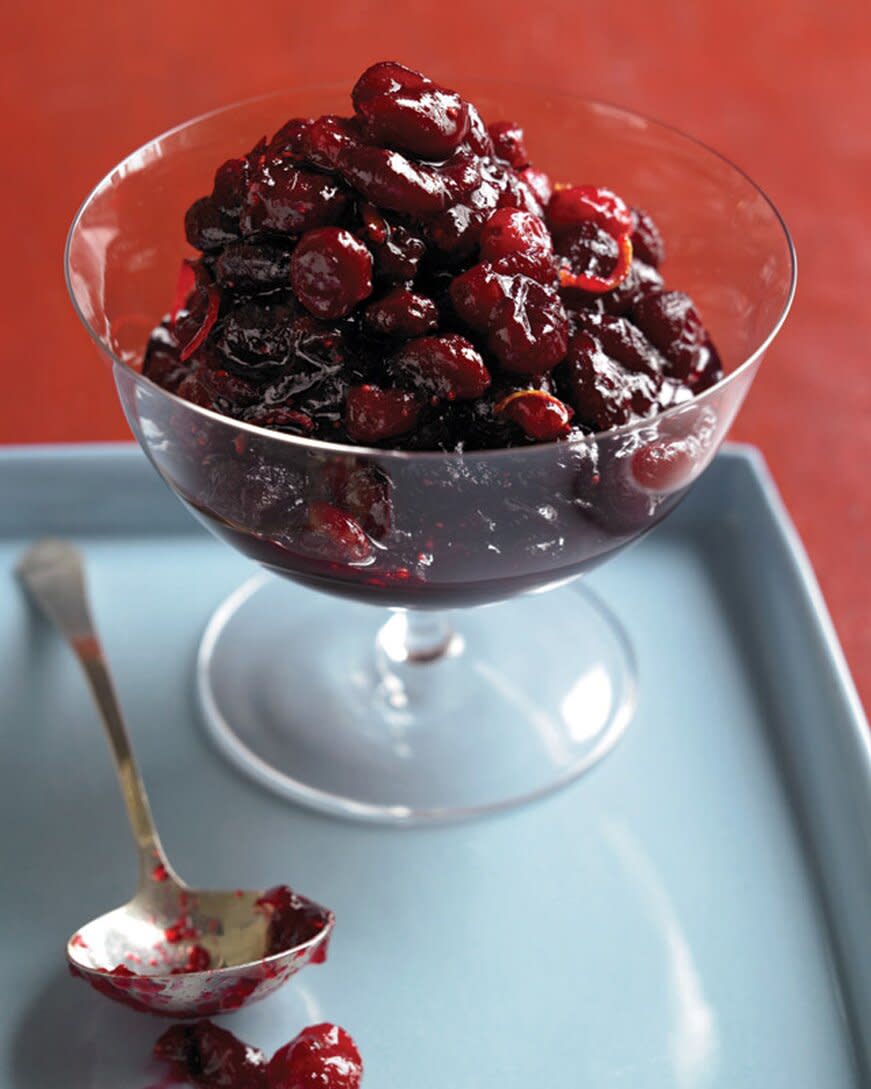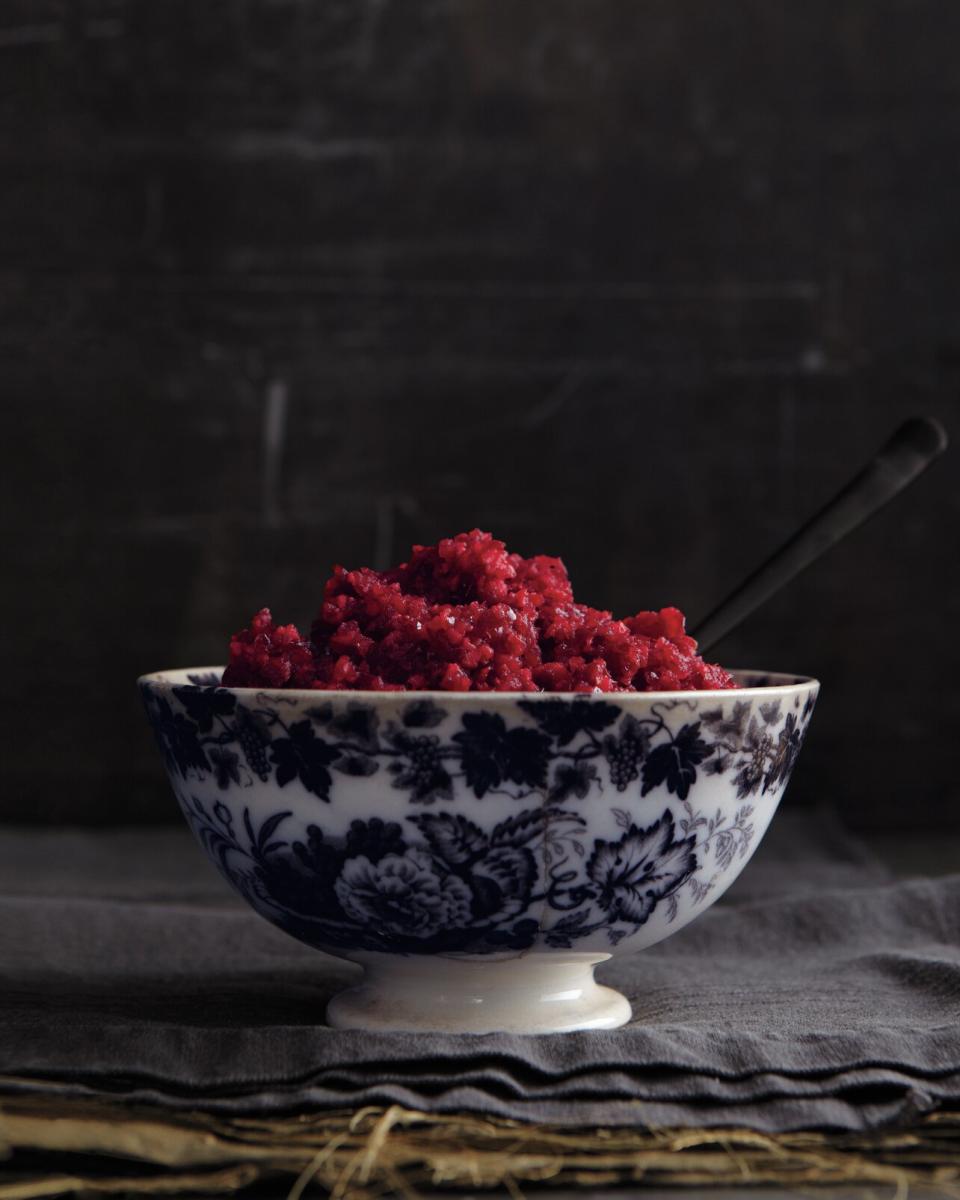Why Do We Eat Cranberry Sauce at Thanksgiving?

Just cranberries, water, sugar, and a touch of lemon zest in this basic but delicious sauce.
Depending on your traditions, the Thanksgiving feast may feature pecan pie over pumpkin, cornbread dressing instead of oyster stuffing, and deep fried turkey rather than stuffed acorn squash. No matter the menu, there's bound to be plenty of side dishes and one of those will likely be cranberry sauce. Americans eat more than 400 million pounds of cranberries every year, 20 percent of which are consumed during the week of Thanksgiving.
Whether you prefer your cranberries cooked with water and sugar into a sauce, raw in a relish, or from a can, when you add cranberries to your Thanksgiving plate you're partaking of one of the oldest Thanksgiving meal traditions. The berries were also local for many of the earliest Thanksgivings.

Raymond Hom A no-cook condiment made with raw cranberries, apple, orange, and sugar.
A native North American fruit, cranberries grow mostly in the Northeast and the Pacific Northwest. It's debatable whether or not there were cranberries at the first Thanksgiving. While not much is known about the food consumed by the Pilgrims and the Wampanoag tribe during the 1621 harvest celebration we trace Thanksgiving to, it likely included deer instead of turkey, and corn and shellfish. While there wasn't the cranberry sauce we're used to at that meal -- sugar wasn't widely available -- there might have been a cranberry dish. The Wampanoag tribe used cranberries for a variety of things including dye, medicine, and food. If the Pilgrims and the Native Americans ate cranberries at that festival it was probably pemmican, a dish of crushed cranberries and dried meat. It wasn't long before cranberries became a popular ingredient among the settlers.
There are reports of what we consider traditional cranberry sauce, stewing the cranberries in water and sugar, dating back to the 1630s. In the 1800s Americans began farming cranberries and in what is known as dry harvesting, they picked the cranberries by hand. It was time consuming and hard work but this is the process that is still used to pick the fresh cranberries you see at the supermarket. By the Civil War cranberry sauce was so ingrained as an American dish that General Ulysses S. Grant ordered cranberries served to soldiers as part of their Thanksgiving meal. In the early 1900s someone realized that flooding the bogs where cranberries grew loosens the berries from the vines until they fall off and float to the surface. Known as wet harvesting, this is quicker and less labor than dry harvesting. At about the same time Ocean Spray began selling those cans of cranberry sauce that you might have grown up with as a Thanksgiving tradition.
Whichever cranberry recipe you end up eating on Thanksgiving, it just might be the most venerable dish on your menu.
Ready for more cranberries? Watch how to make Sweet-and-Spicy Cranberry Sauce:

